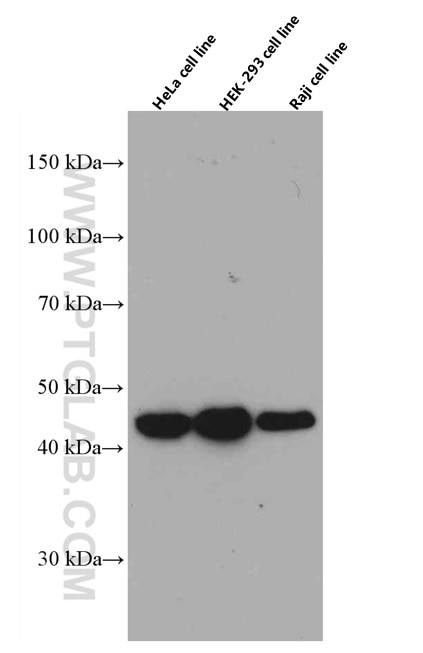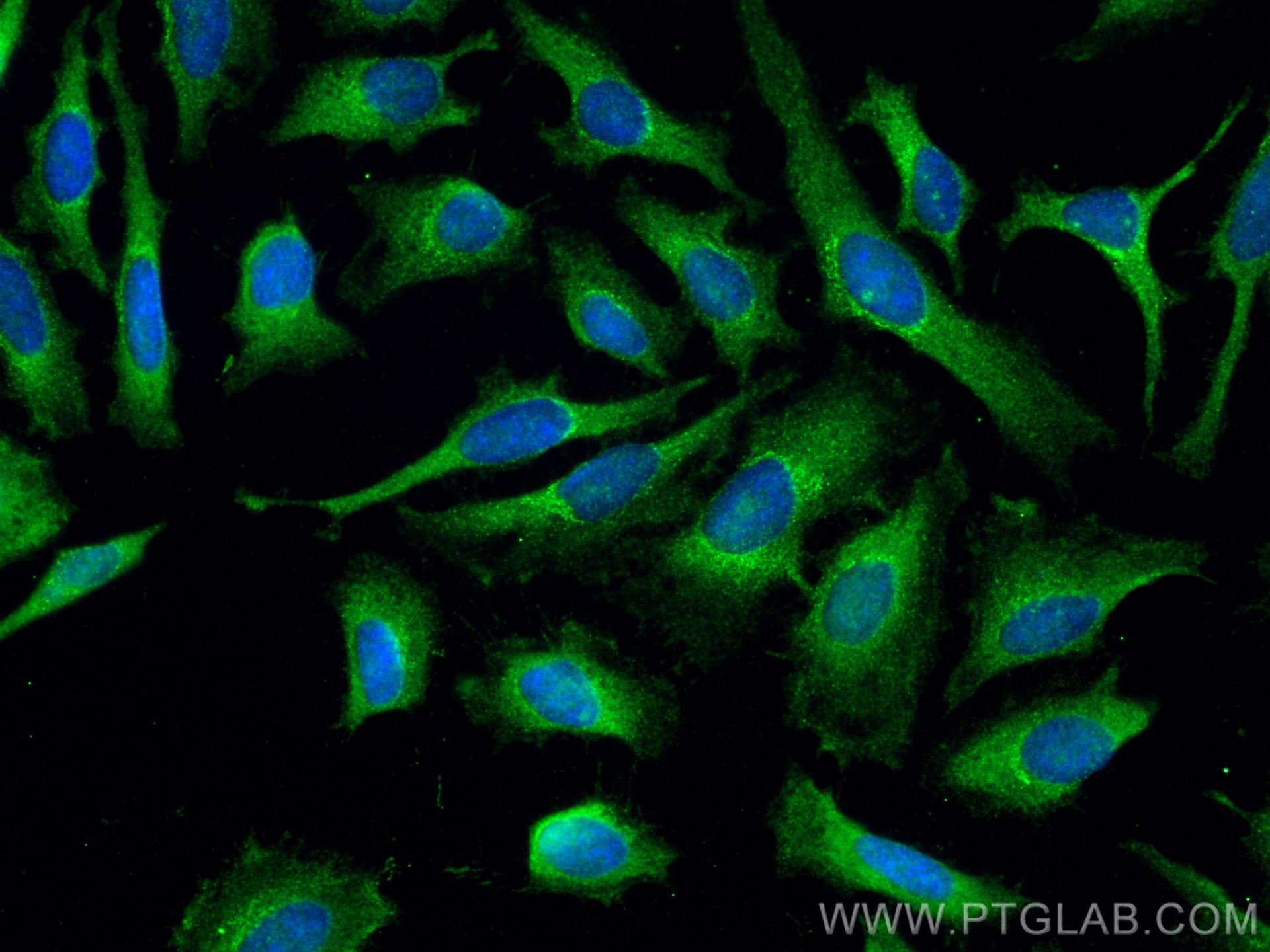Tested Applications
| Positive WB detected in | HeLa cells, HEK-293 cells, Raji cells |
| Positive IF/ICC detected in | HeLa cells |
Recommended dilution
| Application | Dilution |
|---|---|
| Western Blot (WB) | WB : 1:5000-1:20000 |
| Immunofluorescence (IF)/ICC | IF/ICC : 1:200-1:800 |
| It is recommended that this reagent should be titrated in each testing system to obtain optimal results. | |
| Sample-dependent, Check data in validation data gallery. | |
Product Information
66464-1-Ig targets ADRM1 in WB, IF/ICC, ELISA applications and shows reactivity with human samples.
| Tested Reactivity | human |
| Host / Isotype | Mouse / IgG3 |
| Class | Monoclonal |
| Type | Antibody |
| Immunogen |
CatNo: Ag24699 Product name: Recombinant human ADRM1 protein Source: e coli.-derived, PET28a Tag: 6*His Domain: 1-407 aa of BC017245 Sequence: MTTSGALFPSLVPGSRGASNKYLVEFRAGKMSLKGTTVTPDKRKGLVYIQQTDDSLIHFCWKDRTSGNVEDDLIIFPDDCEFKRVPQCPSGRVYVLKFKAGSKRLFFWMQEPKTDQDEEHCRKVNEYLNNPPMPGALGASGSSGHELSALGGEGGLQSLLGNMSHSQLMQLIGPAGLGGLGGLGALTGPGLASLLGSSGPPGSSSSSSSRSQSAAVTPSSTTSSTRATPAPSAPAAASATSPSPAPSSGNGASTAASPTQPIQLSDLQSILATMNVPAGPAGGQQVDLASVLTPEIMAPILANADVQERLLPYLPSGESLPQTADEIQNTLTSPQFQQALGMFSAALASGQLGPLMCQFGLPAEAVEAANKGDVEAFAKAMQNNAKPEQKEGDTKDKKDEEEDMSLD Predict reactive species |
| Full Name | adhesion regulating molecule 1 |
| Calculated Molecular Weight | 407 aa, 42 kDa |
| Observed Molecular Weight | 42 kDa |
| GenBank Accession Number | BC017245 |
| Gene Symbol | ADRM1 |
| Gene ID (NCBI) | 11047 |
| RRID | AB_2881832 |
| Conjugate | Unconjugated |
| Form | Liquid |
| Purification Method | Protein A purification |
| UNIPROT ID | Q16186 |
| Storage Buffer | PBS with 0.02% sodium azide and 50% glycerol, pH 7.3. |
| Storage Conditions | Store at -20°C. Stable for one year after shipment. Aliquoting is unnecessary for -20oC storage. 20ul sizes contain 0.1% BSA. |
Background Information
The 26S proteasome is a key component of the ubiquitin-proteasome system, a process responsible for the majority of cellular protein degradation. hRpn13 (also termed ADRM1 or GP110) is a novel 46-kDa subunit of its 19S regulatory complex. hRpn13 binds directly to the proteasome-associated deubiquitinating enzyme, UCH37, and enhances its isopeptidase activity. Overexpression of hRpn13 promotes the activity of the ubiquitin-proteasome system and modulates the influence of osteoblasts on osteoclasts by controlling the stability of regulatory proteins in osteoblasts.
Protocols
| Product Specific Protocols | |
|---|---|
| IF protocol for ADRM1 antibody 66464-1-Ig | Download protocol |
| WB protocol for ADRM1 antibody 66464-1-Ig | Download protocol |
| Standard Protocols | |
|---|---|
| Click here to view our Standard Protocols |






